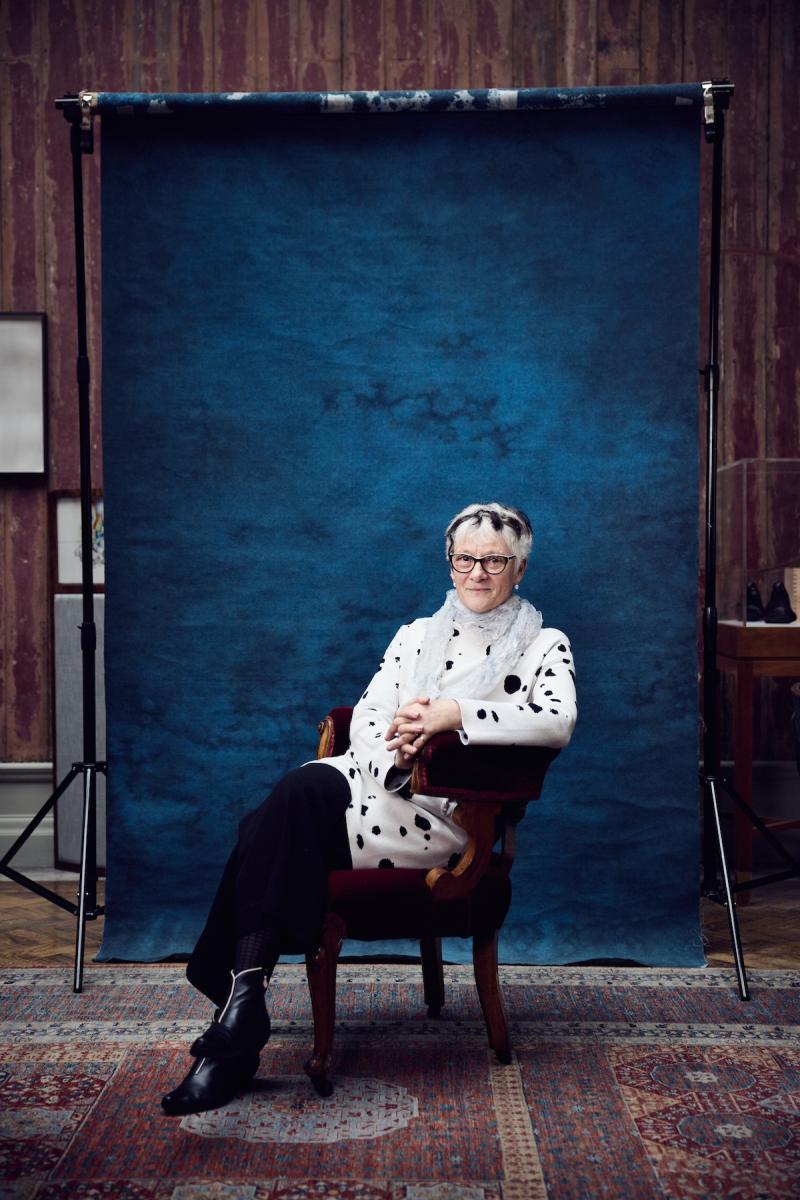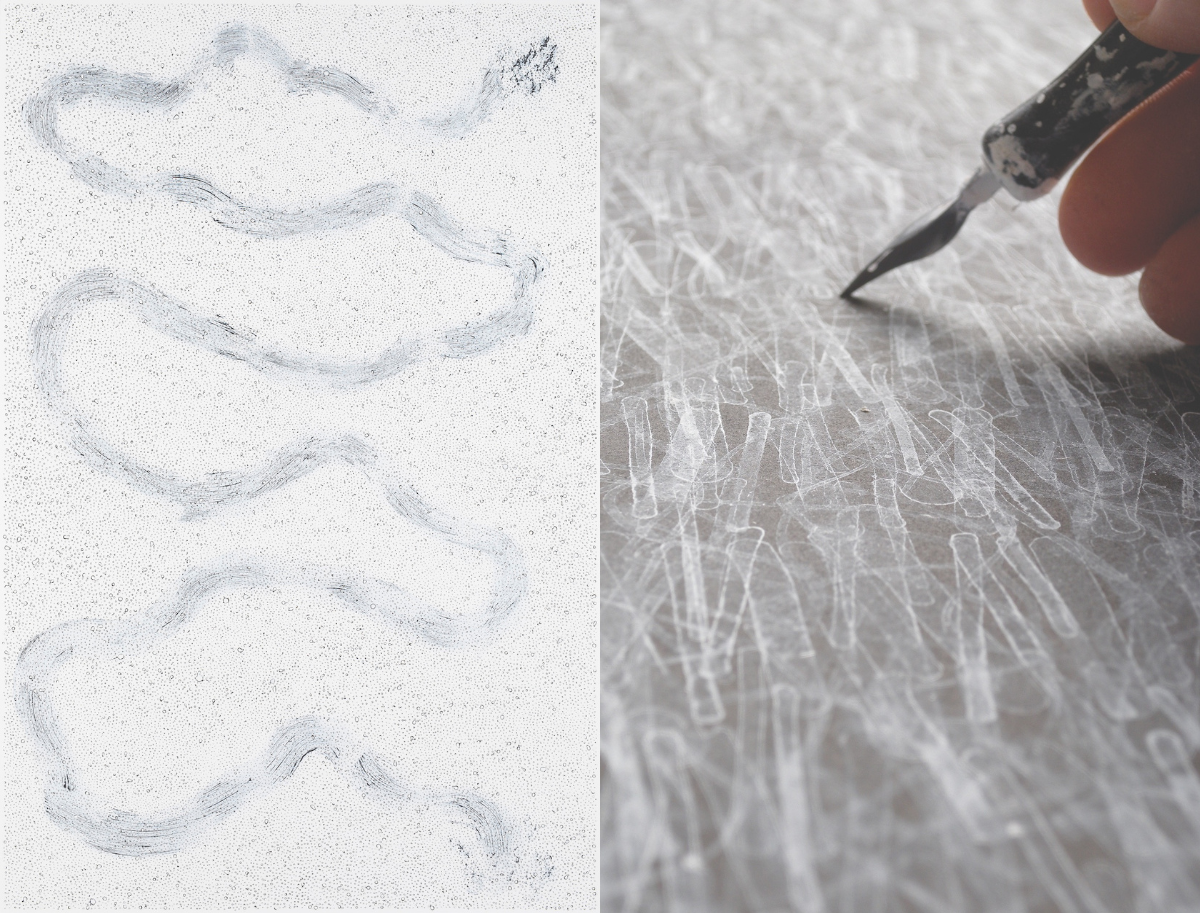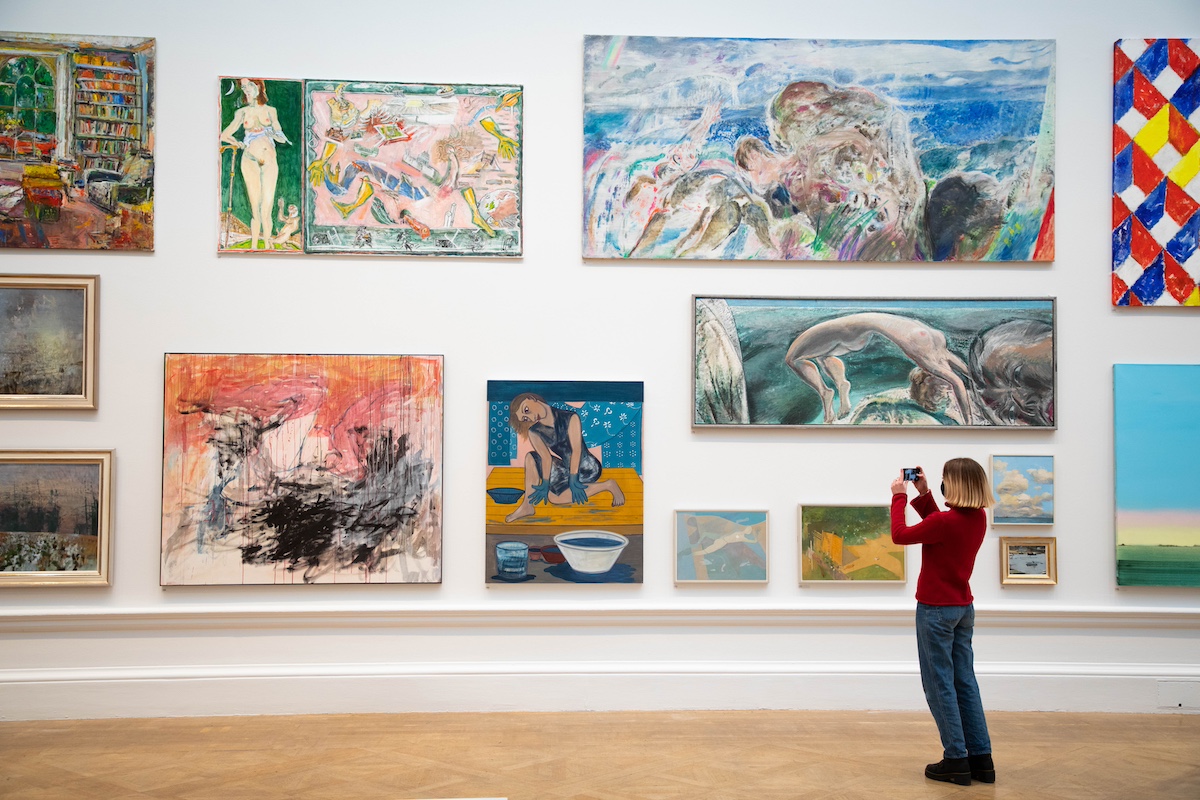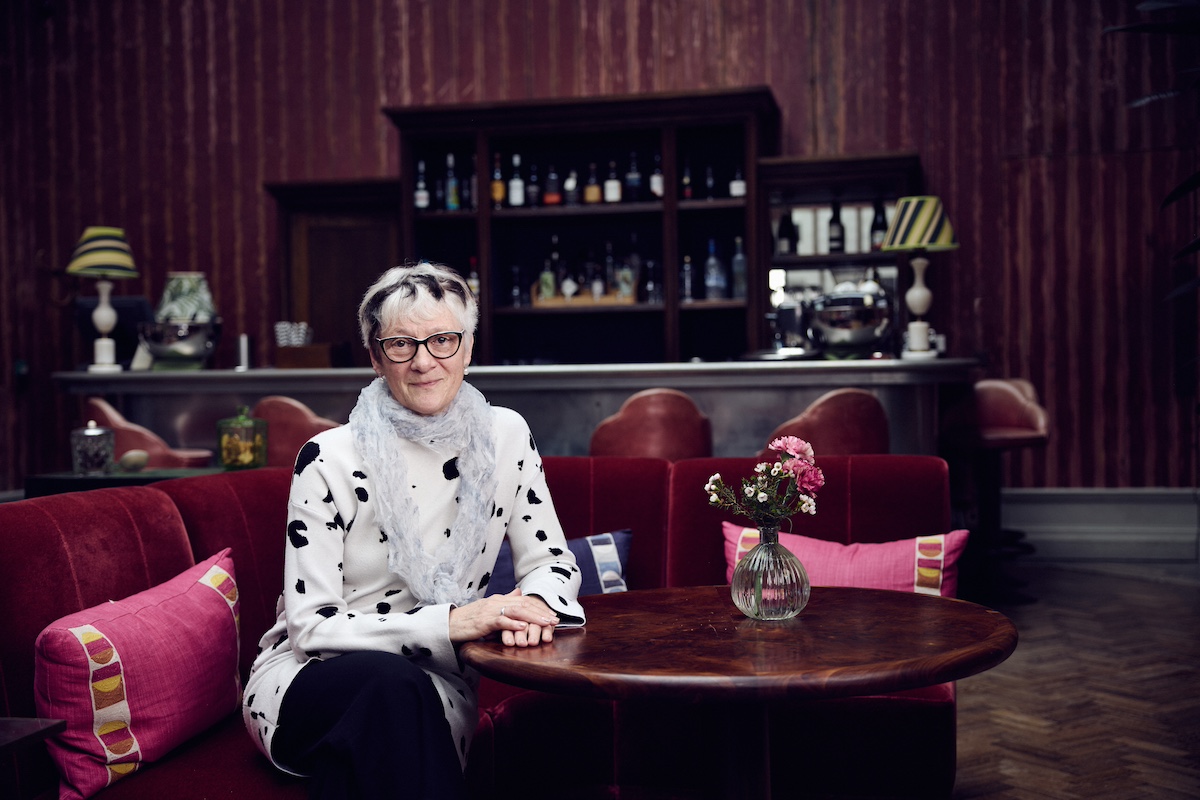This wonderful Cornish workshop and museum is dedicated to the legacy of studio pottery trailblazer Bernard Leach
Rebecca Salter RA – our interview with the first woman President of the Royal Academy of Arts
Rebecca Salter RA – our interview with the first woman President of the Royal Academy of Arts
5 Jul 2024
A young Rebecca Salter was told she didn’t stand a chance of getting into art school. Today she is both a renowned artist and the first woman to hold one of the top roles in the art world. Chloë Ashby met her to discuss how she navigates the colourful challenges that keep coming her way
 Rebecca Salter pictured in the Academician’s Room at the Royal Academy of Arts, London. Portrait: Alun Callender
Rebecca Salter pictured in the Academician’s Room at the Royal Academy of Arts, London. Portrait: Alun Callender
When the painter Christopher Le Brun stepped down as President of the Royal Academy of Arts in December 2019, his parting words to his successor, Rebecca Salter, were about how to balance the role with being an artist. Being President is meant to take two to three days a week. ‘He told me I should only work Monday to Wednesday, then turn my phone off and not look at emails until the following week, because that’s how he managed it,’ she tells me, with a wry smile. ‘But of course we all know what happened next.’
It’s a Monday afternoon in March, four years on from the first Covid-19 national lockdown in the UK, which occurred just a few weeks into her presidency. We’re sitting across from one another on squashy sofas in the Grimshaw Library at the Royal Academy. Salter and I have spoken before, soon after her election, and we’re both glad to be doing so in person this time, rather than over the phone.
She’s dressed in the monochrome hues she favours, with black-and-white hair and a splodgy jumper that makes me think of spilt ink. From the moment she arrives to when we say goodbye, she’s friendly and open, often smiling and laughing. Her responses to my questions are thoughtful and precise, not unlike her meditative abstractions. Because that’s who Rebecca Salter is first and foremost: a painter and printmaker.
 Rebecca Salter’s Untitled JA16 (2020), mixed media on linen, and a detail of the artist working on an artwork. Images: FXP Photography; copyright of the depicted artworks remains with the artist
Rebecca Salter’s Untitled JA16 (2020), mixed media on linen, and a detail of the artist working on an artwork. Images: FXP Photography; copyright of the depicted artworks remains with the artist
Later in our conversation, she’ll refer to her art as her ‘real job’. As a child growing up in rural Lincolnshire she didn’t know what an artist was, but her mother made everything and she soon realised she liked to make things too. ‘I also liked the solitary nature of the way you disappear when you’re on your own when making,’ she says. ‘I still do.’
Keen to hit their quotas, her schoolteachers told her she wouldn’t get into art school and that she should apply to universities to do history of art instead. ‘But I knew myself well enough to know I wasn’t an academic,’ Salter tells me. ‘I wanted to spend all day making pieces, not thinking and writing about them.’
She began by studying ceramics at Bristol Polytechnic, which helped her to hone her style. ‘There are lots of processes in ceramics that are long and slow, and made up of incremental changes, which suits me, rather than a grand gesture that’s all over in a couple of minutes,’ she says. Her way of working – meticulous, rhythmic, restrained – was further influenced by her time in Japan.
After graduating in the summer of 1977, she studied at Kyoto City University of the Arts, where she moved away from ceramics and then took an interest in paper, brushes, pigments and subsequently Japanese woodblock. ‘For me, understanding the materials is key.’
That isn’t to say Salter is materialistic. On the contrary, she tossed the work she made at Bristol into the River Avon (‘it went back to mud’), and later ditched the work she made in Japan (‘I left it in a shed, which blew down in a typhoon’). I ask if she’s more attached to her creations today and she tells me she tries to stick to one in, one out. ‘If I make something new, I like to throw something old away,’ she says. ‘Sometimes my husband makes me keep things, but I did get two big pieces in the bin last week, so I was quite pleased with that.’
It’s a minimalist mindset at odds with the piled-high walls of the RA’s annual Summer Exhibition. When we meet, Salter and the committee have just begun to whittle down this year’s 16,500 entries to 1,500. ‘There’s something in me that yearns for simplicity, and I’m interested in the concept of “enough” in life and in art,’ she admits, adding: ‘I think probably I’m easily overwhelmed.’
 The show went on: an installation view of the 2020 Summer Exhibition, delayed due to Covid-19 lockdowns. Image: © Royal Academy of Arts/David Parry
The show went on: an installation view of the 2020 Summer Exhibition, delayed due to Covid-19 lockdowns. Image: © Royal Academy of Arts/David Parry
I’m not sure I agree with that last remark. After all, this is the woman who steered the RA through the pandemic – an event the organisation’s archivist described as the most serious and existential of all the crises it’s faced in its 256-year history. When the institution closed in March 2020, it was losing a million pounds a month.
How did she hold her nerve?
She says she couldn’t have done it without Axel Rüger, who was appointed Secretary and Chief Executive in July 2019. ‘He absolutely knew what we had to do to survive,’ says Salter, serious now. ‘And I think it was fortunate we were a new team because we had the energy to think the unthinkable and just keep going.’ That ‘keeping going’ ensured that the Academy’s Summer Exhibition that year, such a global and major annual event, went on to be staged, if delayed in timing.
What made her stand for election in the first place?
She nods and laughs, acknowledging that the decision must seem strange: as she tells me, she’s the kind of artist who wouldn’t ever want to have a studio full of assistants ‘partly because I don’t want to run a big organisation’. But as she points out, she’d been Keeper of the RA Schools since 2017 and almost over-engaged in the main body of the Academy, fundraising and more. ‘The problem is I’m one of those people who, if someone asks: “Does anybody want to do x?”, I will say I’ll do it. So, I put my hand up.’
The result was a historic moment for the RA. Salter, 69, is the Academy’s first woman President since its founding in 1768, which brings with it added pressures. She’s fully aware of those but comments: ‘It’s ridiculous to expect every woman who’s put in a position of leadership to be special.’ She also knows there are lots of young women working with her and she doesn’t want to let them down: ‘I want to be a role model.’
 Rebecca Salter photographed at The Royal Academy of Arts. Portrait: Alun Callender
Rebecca Salter photographed at The Royal Academy of Arts. Portrait: Alun Callender
Another thing she doesn’t want is for the President in 50 years’ time to look back and ask why she didn’t do more to advocate for art in schools.
‘Art is not offered now in many state schools, and we’ve got to do something if we don’t want the only potential Royal Academicians of the future to just come from the public school strata,’ she says.
This year the organisation is focusing on the importance of art education, with the RA Schools reopening in May, and an autumn exhibition by artist and art educator Michael Craig-Martin. ‘Since we don’t get any government money, we’re in a position to speak out, whether or not it upsets those in power.’
Before we say goodbye, I’m keen to hear how Salter continues to balance her responsibilities at the RA and being an artist. She laughs and mumbles the word ‘unsuccessfully’. Ideally, she’s in the studio on Thursdays and Fridays, and she tries to drop by for an hour on other mornings, following her daily dip in the West Reservoir in London’s Hackney. She realised she’d be miserable when she steps down if all she had were hundreds of tiny pictures rattled off in scraps of time, so she made the decision that she’d work on two or three big paintings a year – ‘because at least I wanted something substantial’. As for whether the role has had an impact on her art, she thinks if anything it’s cemented her desire to be in her studio and make. ‘It might be because of the stage I’m at in life, but I do think, curiously, it’s made me want to do the public side of things less. It’s made me more hermit-like, really.’ She pauses. ‘The truth is the Royal Academy of Arts is full of amazing talent and I’ve learned a phenomenal amount from everybody I work with, so it’s a privilege to be a part of the team. And I do quite like people, just in bits,’ she adds, smiling. ‘As long as I can retreat to my solitary confinement in the studio, I can do all the other stuff.’
Summer Exhibition 2024 is at the Royal Academy of Arts, London until 18 August
Young Artists’ Summer Show is at the Clore Learning Centre, Royal Academy of Arts, London from 16 July–11 August
For both, see royalacademy.org.uk
Read The Arts Society’s ‘Become an instant expert on the tale of women artists and the Royal Academy’ with Arts Society Lecturer Dr Amy Lim online at theartssociety.org/instant-expert
This interview appears in the summer issue of The Arts Society Magazine, in which Rebecca Salter also shares her 'art notes’ on her favoured music, book and writings. The magazine is available exclusively to members and supporters of The Arts Society (to join, see theartssociety.org/member-benefits)
About the Author
Chloë Ashby
is an arts critic and writer for publications including The Times, The Guardian and frieze. Her books include Wet Paint and Colours of Art: The Story of Art in 80 Palettes
JOIN OUR MAILING LIST
Become an instant expert!
Find out more about the arts by becoming a Supporter of The Arts Society.
For just £20 a year you will receive invitations to exclusive member events and courses, special offers and concessions, our regular newsletter and our beautiful arts magazine, full of news, views, events and artist profiles.
FIND YOUR NEAREST SOCIETY
MORE FEATURES
Ever wanted to write a crime novel? As Britain’s annual crime writing festival opens, we uncover some top leads
It’s just 10 days until the Summer Olympic Games open in Paris. To mark the moment, Simon Inglis reveals how art and design play a key part in this, the world’s most spectacular multi-sport competition



